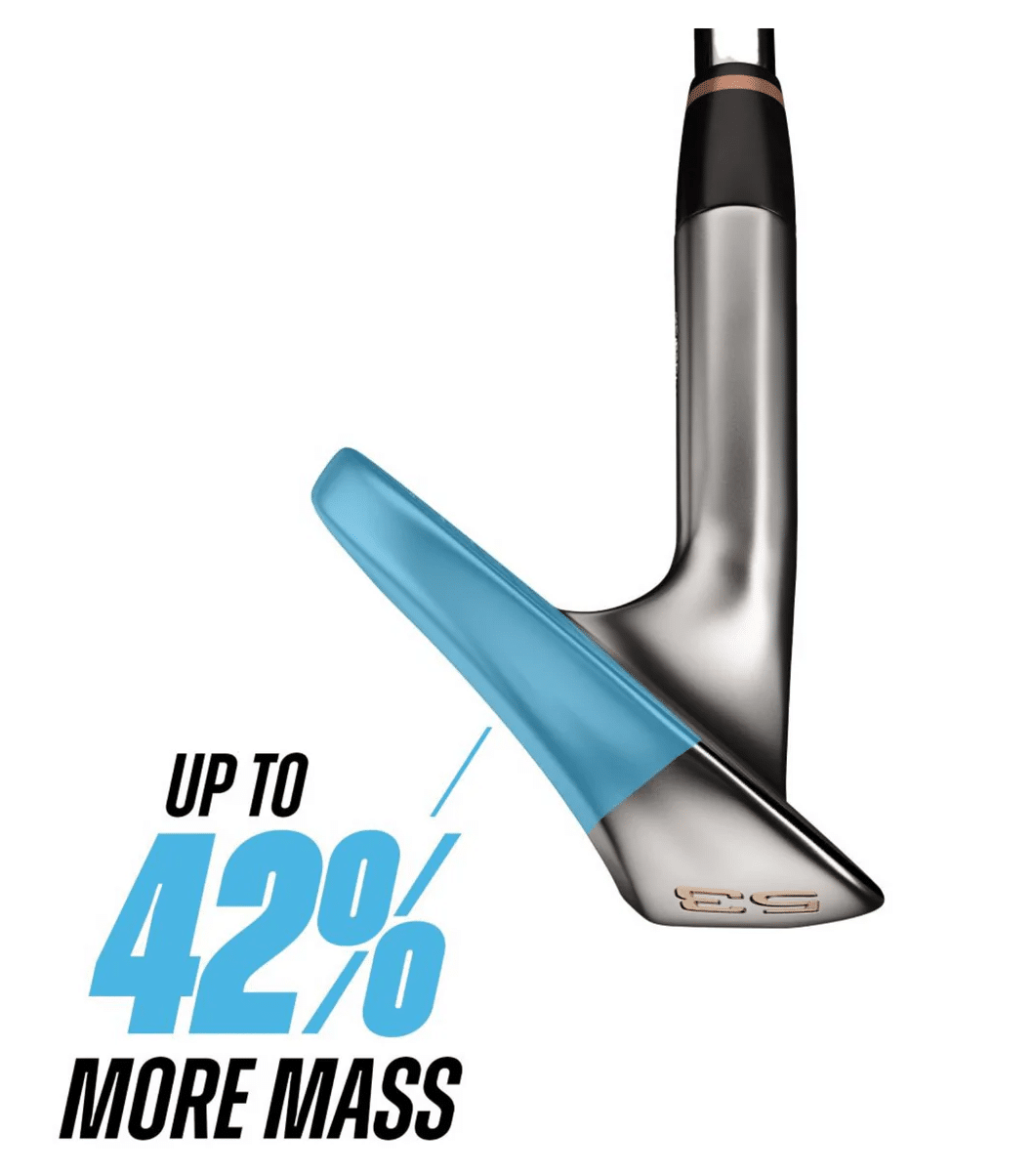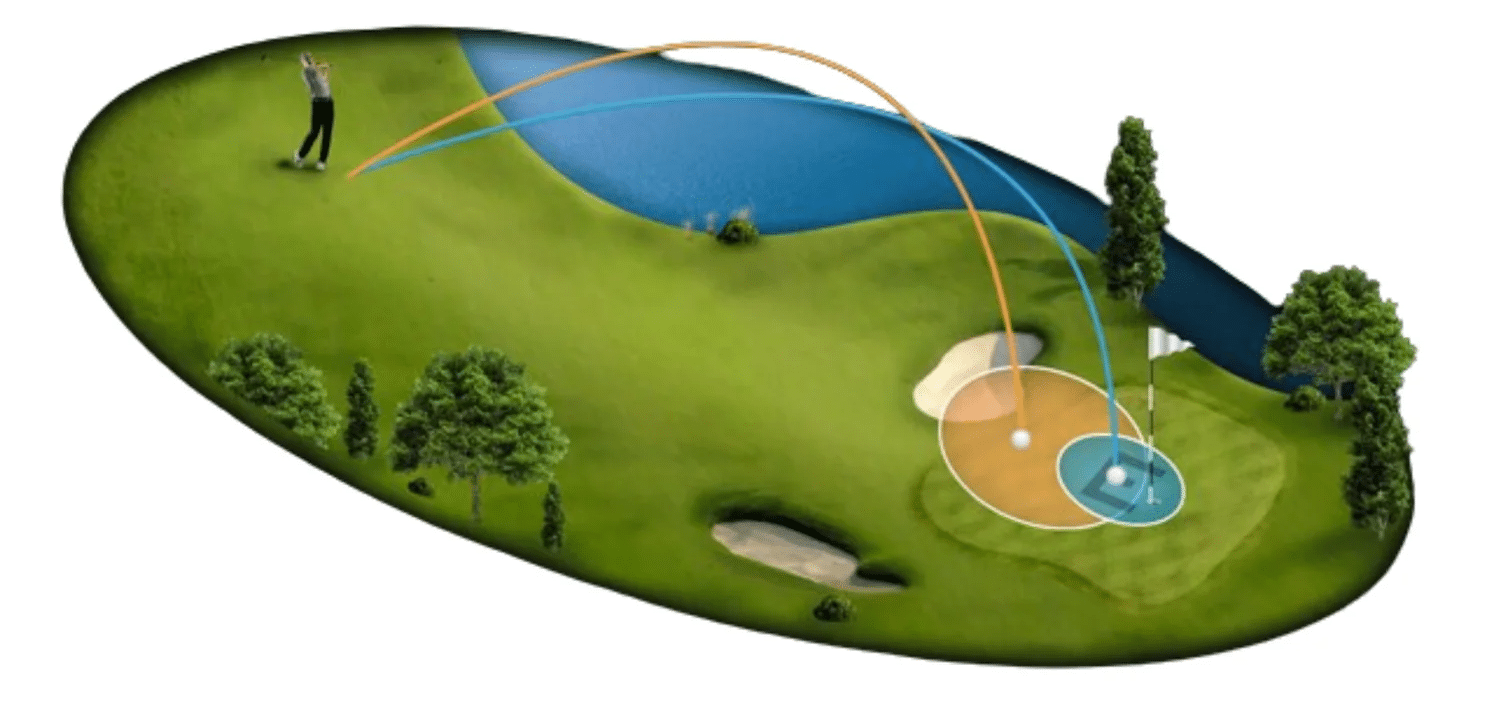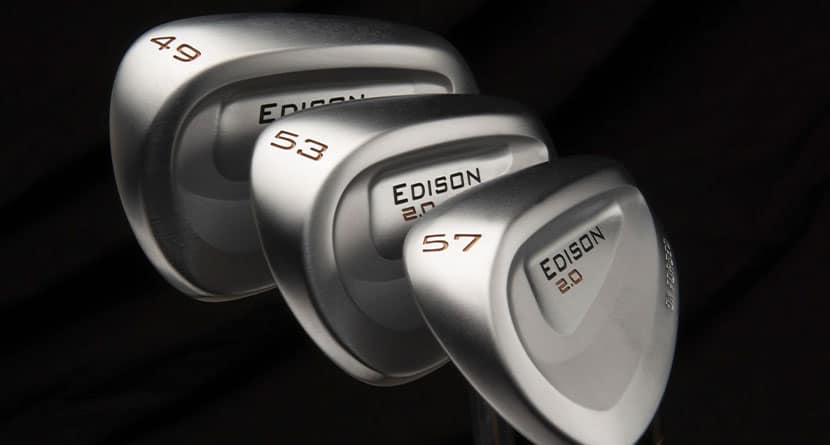What You Need To Know
- The Edison 2.0 wedges are the next generation of scoring clubs designed with the amateur golfer in mind by famed club designer Terry Koehler
- The 2.0s come in every loft from 45° to 60°, feature a variety of KBS shafts and are built to each players exact specifications
- Available as a single, 3-wedge set or 4-wedge set, the 2.0 retails for $199.95 with discounts for the sets
How do you improve one of the best wedges to ever be brought to market with amateur golfers in mind?
That was the question facing Terry Koehler and his team at Edison Golf in the intervening years since the successful launch of their first generation of wedges.
But before getting into what’s new and improved in the 2.0s, it’s best to first understand the mission of Koehler and his company. Simply put, they put the amateur golfer first. In a golf equipment world where engineering golf clubs for the best players in the world drives innovation, Koehler looked at the consumer landscape and realized that the vast majority of folks who pick up golf clubs will never sniff the big time.
As a result, he went to work studying 60,000 different wedge fitting reports and found something that shouldn’t surprise you: amateur golfers hit the ball in a far larger dispersion area on the face than the pros. We’ve all seen the wear marks that pros put on their clubs — it’s roughly the size of a penny right between the 2nd and 5th grooves on the club. When you see an amateur’s wear pattern, it’s closer to the size of a half dollar and a few grooves higher.

What that means is that most recreational golfers are not getting the most out of their wedges on their most common strikes, and they’re getting even less out of their mishits. And with that, the Edison Wedge was born: a recreational player’s wedge that delivers Tour-level performance throughout the face.
What Technology Is In Edison Wedges?
The above illustration of the strike zone on the wedges was the driving thought process in designing these clubs. Similar to what we’ve come to know and expect in our more forgiving iron sets, hybrids, fairway woods and drivers was simply not available in some of our most oft-used clubs.
Again, that’s because the best players in the world have become so adept at using these stagnantly-designed clubs that their mishits are so few and far between that innovation hasn’t been necessary. So why have the major OEMs built players irons, game-improvement irons and giant, forgiving driver faces? Because the consumer required it.
“(Wedges are) historically the lowest priced club on the rack,” Koehler said back in a 2019 MyGolfSpy.com interview. “Putters are $250 to $500, drivers are now $500, and wedges are now $150, and they’re bought one at a time. Second, it’s a million-unit-a-year category at the lowest price, versus 2.5 million units a year of $500 drivers, 2.5 million units a year of $400 putters, and 800,000 to a million units a year of irons sets. The economics of it doesn’t cause companies to say we’re really going to emphasize wedges.”
Bucking convention, Koehler went to work adding more weight and forgiveness to his wedges, adding 42% more mass behind the grooves higher in the face where recreational golfers strike the ball “making the smash factor as consistent as possible across the entire face, so those not-so-good shots turn out more like your best,” as their website states.
Add in the patented Koehler Sole — a one-size-fits-all, versatile bottom of the club that removes the headache of figuring out what bounce and grind you need — a variety of shaft optimizations, customizable loft, lie and length options and you have a wedge that doesn’t look like the others on the market, and that’s on purpose.

What’s New In The 2.0s
So, back to the original question at the top of the page: How do you improve one of the best wedges to ever be brought to market with amateur golfers in mind? By iterating, optimizing and tweaking.
Koehler has slightly adjusted the shaft configurations to create more stability and predictability for full shots as well as those shorties around the green. He’s also moved some more mass into the back of the club to further mask your mishits. But most noticeably, Edison has refinished their wedges with what’s called a Pearl Chrome finish.
The Pearl Chrome finish applied to the hitting area of the golf club not only gives the hitting area a distinct look, it serves a purpose as well, most notably it repels moisture better to give you more spin and shotmaking control.
Who Are These Wedges For?
This is the question that kept coming up as we spoke with Koehler. Giving these wedges to a Tour pro would be interesting, but it would negate — or at least detract from — the hours and hours of work they’ve put into their short games to make those penny-sized wear marks. Giving them to a 100-shooter wouldn’t serve a marked improvement simply because they lack the skill and precision to hit the shots necessary.
But everyone in between? That’s the target market.
“Every week we see the tour players execute these magical up-and-downs from all kinds of lies,” Koehler said when posed with this topic. “Through thousands of cumulative hours of practice — with wedges that essentially have not changed much in their lifetimes — they have learned to independently control trajectory, carry, spin and roll to execute an amazing portfolio/repertoire of scoring shots that even the most ardent ‘everyday’ golfer cannot even dream of. Because the Edison wedges do not launch or spin like the wedges they are used to, I believe they would disrupt that cumulative learning curve.
“Essentially, the Edison wedges are engineered to give any golfer more consistent distance, trajectory and spin as impact is moved around the face through a series of rounds and years. We both know that Tour players routinely come up 50-80 feet short on the occasional full-swing wedge, and they NEVER misjudge a shot by that much. Every time you see that, you can bet that they caught the ball a bit higher in the face and they, too, were victimized by that shortcoming of “tour design” wedges.”
In a nutshell, the Edison wedges are designed with every golfer from a scratch handicap with a shaky short game to the bogey golfer in mind. If you take golf even somewhat serious, these are the wedges for you.

Conclusion
My affinity for the Edison Wedges has been apparent since 2020 when they replaced the Titleist Vokey Wedges I had played for decades. This latest iteration from Koehler and his team is only the latest example of that.
In the same way the SM10s follow the SM9s, the 2.0s follow the original Edison Forged Wedges: namely, small tweaks, improved performance and fresh grooves. It’s a pleasure to get to chat with Terry and hear his matter-of-fact way of talking about wedge design. As long as he’s making wedges, he’ll have a customer.
Edison 2.0 Wedges are available from 45° to 60°, a variety of shaft weights and lengths, and customizable lofts and lies. They are available as single wedge purchases, 3-wedge sets and 4-wedge sets. Individual wedges retail for $199.95. Learn more about Terry Koehler and Edison Golf at their website, EdisonWedges.com.




